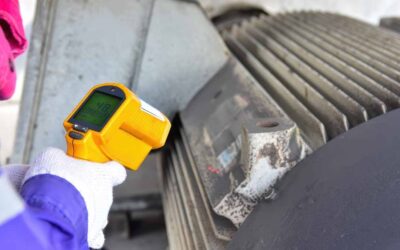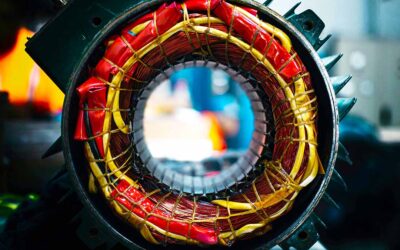Maintenance isn’t jazz. It’s not improvisational. It’s repeatable work. And because it’s repeatable, it can be standardized, executed precisely, and continuously improved. Yet too often, maintenance remains an act of reactivity — chasing breakdowns, improvising fixes, and relying on heroics. This isn’t craftsmanship. It’s chaos disguised as culture.
If we want safer, more reliable, and more cost-effective operations, we must move from improvisation to standardization. That means investing in standard job plans, coaching precision at the point of execution, and creating a feedback loop that fuels continuous improvement. This article is a call to do just that. Let’s quit the chaos and begin leveraging the repeatable nature of maintenance work!
Why Standardization Matters
Let’s begin with the fundamentals. In mining and other asset-intensive industries, three factors drive value: geology, market conditions, and asset performance. Of those, only asset performance is within our control. If the ore body’s no good, we don’t mine. If the market price is soft, we’re price takers. But how well we operate and maintain our assets? That’s our responsibility.
And that’s where standardization comes in.
The best operations plan 100% of their time-/usage-based maintenance work and at least 80% of their corrective work from a library of standard job plans. At the other end of the spectrum, poor performers rely heavily on ad hoc planning — each job a one-off. That’s a waste of planner time, a risk to asset health, and a barrier to automation.
Poor planning isn’t just inefficient – it’s a barrier to automation.
Lower quartile performers do well to plan 20% of their jobs according to standard plans. As a result, their craft wrench-time and planner-to-craft ratios suffer dramatically (Figure 1).

Figure 1 – Upper quartile performers execute a majority of their work to standard plans. Doing so drives both wrench-time and planner efficiency.
Standardized job plans reduce rework, shorten wrench times, and enable safer, more efficient execution. They are also foundational for onboarding new team members and transferring institutional knowledge before it walks out the door. Standard job plans also serve as the basis for continuous improvement. When you plan jobs from scratch, you start from point zero every time.
Building the Job Plan Right
Every standard job plan should be rooted in a Life of Physical Asset Plan (LOPAP) — a whole-of-life view that anticipates major rebuilds, statutory inspections, condition monitoring, and recurring maintenance work.
From that foundation, we build a library of the top 80% of corrective maintenance jobs. These jobs should be:
- Defined by intent (e.g., “replace drive motor”)
- Prework defined
- Supported by a clear task list with Precision (FLAB) details (Table 1)
- Informed by a solid Job Hazard/Risk Analysis (JRA/JHA)
- Bundled with required tools, parts (BOMs), and estimated time by trade
- Tied to relevant FLAB elements — Fastening, Lubrication, Alignment, and Balance
- Complemented by photos, videos, or flowcharts for clarity
- Closed out with room for feedback and lessons learned
The task list is the beating heart of the plan. It’s not just a checklist. It’s where we embed craft knowledge and FLAB excellence — specifying bolt torque values, lubricant types and quantities, alignment tolerances, and balancing procedures.

Table 1 – The task list is the heart of a planned maintenance job. In this task list for a changeout of a 500-kW motor, I include important Precision Fastner, Lubrication, Alignment, and Balance (FLAB) details, craft required, and estimated step duration.
From Plan to Precision: The Role of Coaching
Even the best plan on paper is only as good as the execution it enables. That’s why field coaching is essential.
Field coaching is not inspection. It’s not oversight for the sake of compliance. It’s a mentorship mechanism — a way to pass down craft, reinforce standards, and build pride. The best supervisors don’t hover; they coach. They ask questions, offer corrections, and celebrate precision.
It’s at the point of work that knowledge becomes muscle memory.
I’ve seen it firsthand: when a tradesperson understands the “why” behind torque specs or the consequence of misalignment, they don’t just comply — they take pride. And that pride is what sustains a reliability culture long after the coach walks away.
Standardization Enables Automation
Automation is a hot topic, and rightfully so. AI and ML have the potential to transform maintenance — from predictive analytics to dynamic scheduling and automated closeout.
Figure 2 simply illustrates what can reasonably be automated, semi-automated, or augmented capability for front-line workers. But automation without standardization is like installing a jet engine on a wooden cart. It’s faster, but it’s still chaos.
Figure 2 – Standard job plans serve as the foundation to enable AI- and ML-enabled automation efficiencies.
Standard job plans are what make automation viable:
- They enable automated scheduling based on meter readings or condition triggers.
- They allow for auto-generated work orders that are tailored but consistent.
- They create a foundation for performance analysis, because comparison requires consistency.
Without standard plans, our digital investments will deliver only marginal gains — or worse, introduce noise that masks what matters.
Safety, Energy, and ESG
Let’s not forget the broader implications. Standardization supports not only uptime and cost control, but also safety, energy efficiency, and environmental performance.
A standardized approach reduces exposure to:
- Arc flash, through proper electrical circuit management.
- Slip and fall incidents, through reduced leakage and cleaner work environments.
- High-energy failures, by enabling proactive repairs instead of urgent interventions.
Energy use also improves when we get the basics right:
- Mechanical alignment reduces friction and heat.
- Correct belt tension minimizes slippage.
- Phase-to-phase electrical balance ensures motors draw evenly and efficiently.
- Proper lubrication reduces drag and extends life.
The U.S. Department of Energy estimates a 21% energy efficiency opportunity in mining operations alone — a number that becomes achievable when we pair lean operation with precision maintenance.
From Chaos to Control — One Job Plan at a Time
This isn’t glamorous work. It’s not the kind of thing that makes headlines. But it’s what drives results.
I often say: maintenance is repeatable, and repeatable work should never be reinvented. Every time we write a job plan from scratch, we miss an opportunity to learn, to teach, and to improve.
So let’s stop improvising. Let’s stop chasing. Let’s build. Let’s coach. Let’s learn.
One job plan at a time.
One coaching moment at a time.
One continuous improvement loop at a time.
That’s how we go from chaos to control. That’s how we build excellence that lasts.












